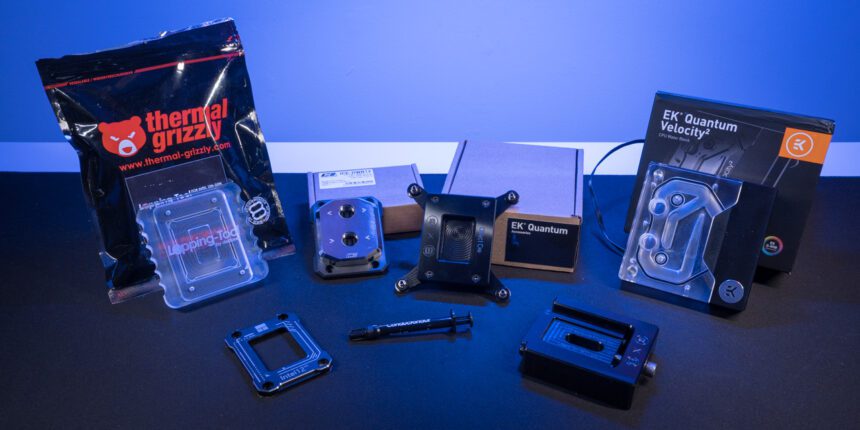We noticed a large variation in center temperature for both the stock retention system and the contact frame. In general, the hottest cores were 12 to 13 degrees Celsius warmer than the coldest cores. Also, until deriding, cores #5 and #7 were always the two hottest, and cores #0 and #1 were the coolest. Wrapping the IHS made a noticeable difference, again not as much as I expected. The hottest cores only benefited by ~3 degrees Celsius, but overall most cores remained several degrees cooler throughout the test period.
Something interesting happens when you use the EKWB Velocity2 Direct Die block. As mentioned above, the first test immediately failed and I knew something was wrong. After reapplying Conductonaut and remounting the block, the numbers looked very good. The hottest core was a full 13 degrees Celsius cooler than stock, and the coldest core was 9 degrees Celsius cooler. Overall, I was pretty happy with the results and felt that the hassle of the EK mount system might have been worth the trouble. That’s how I felt right before I tested Iceman.
Iceman Cooling Direct Die Blocks provide incredible performance. The package temperature was a full 11 degrees Celsius lower than the EKWB block. This means that it is 24°C cooler under load than the stock product. He only had one core that went above 80C, and oddly enough it was core #3, not core #5. The highest temperature of any other core hit was 76 degrees Celsius.
After checking all the data, I noticed some interesting things. All three results before deriding peaked at over 360 watts during the Cinebench loop. Despite the fact that all motherboard settings were unchanged from before (I double-checked this), the CPU power consumption decreased after deriding. During the R23 loop, only 356.49 watts were measured with the EKWB block and 350.41 watts with the Iceman attached. The Iceman result was also the only one where the package temperature did not match the hottest core, but it was also the only one where the hottest core was not #5. This indicates that the package temperature sensor is very close to core 5, or that core 5 is the sensor used to report package temperature.









